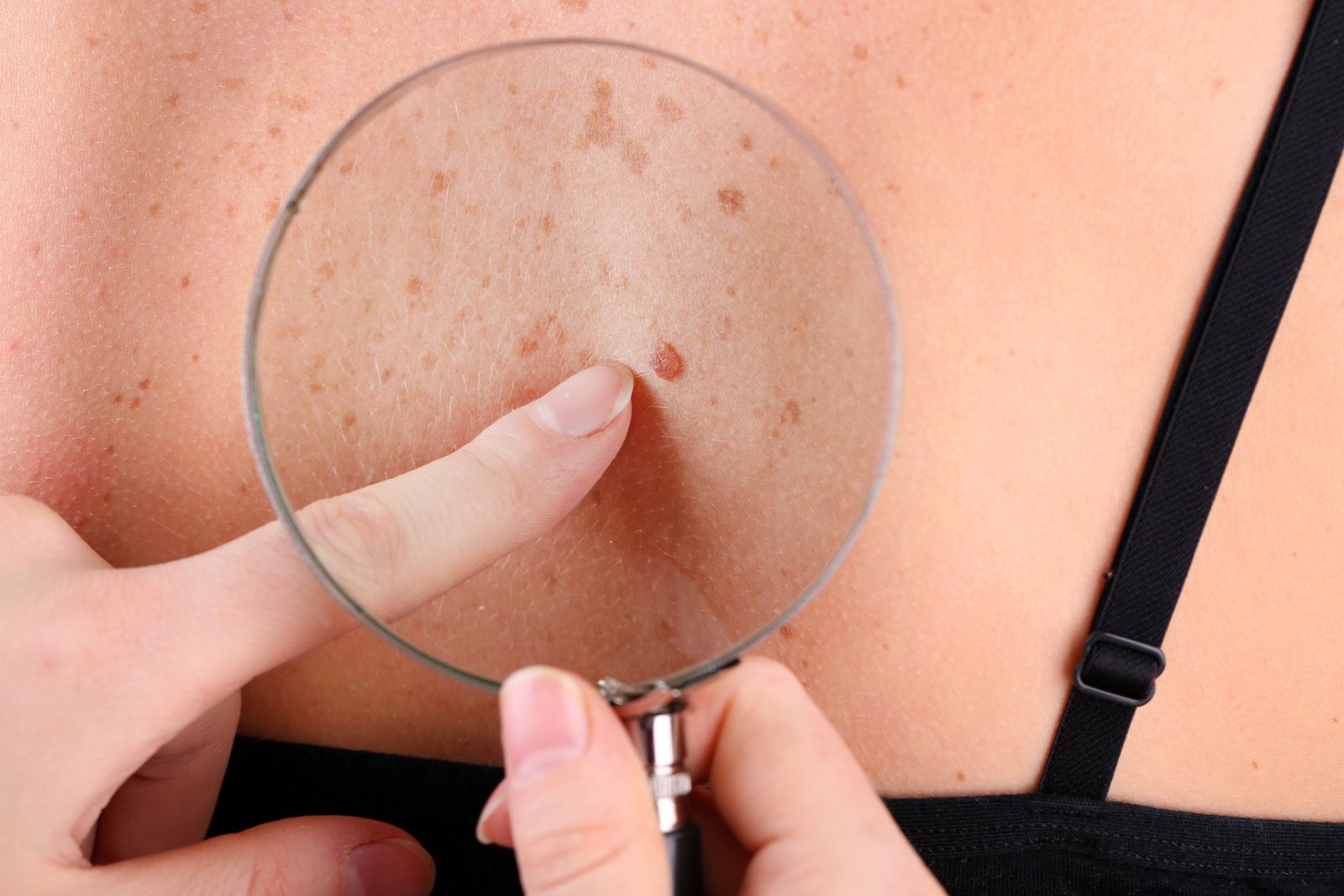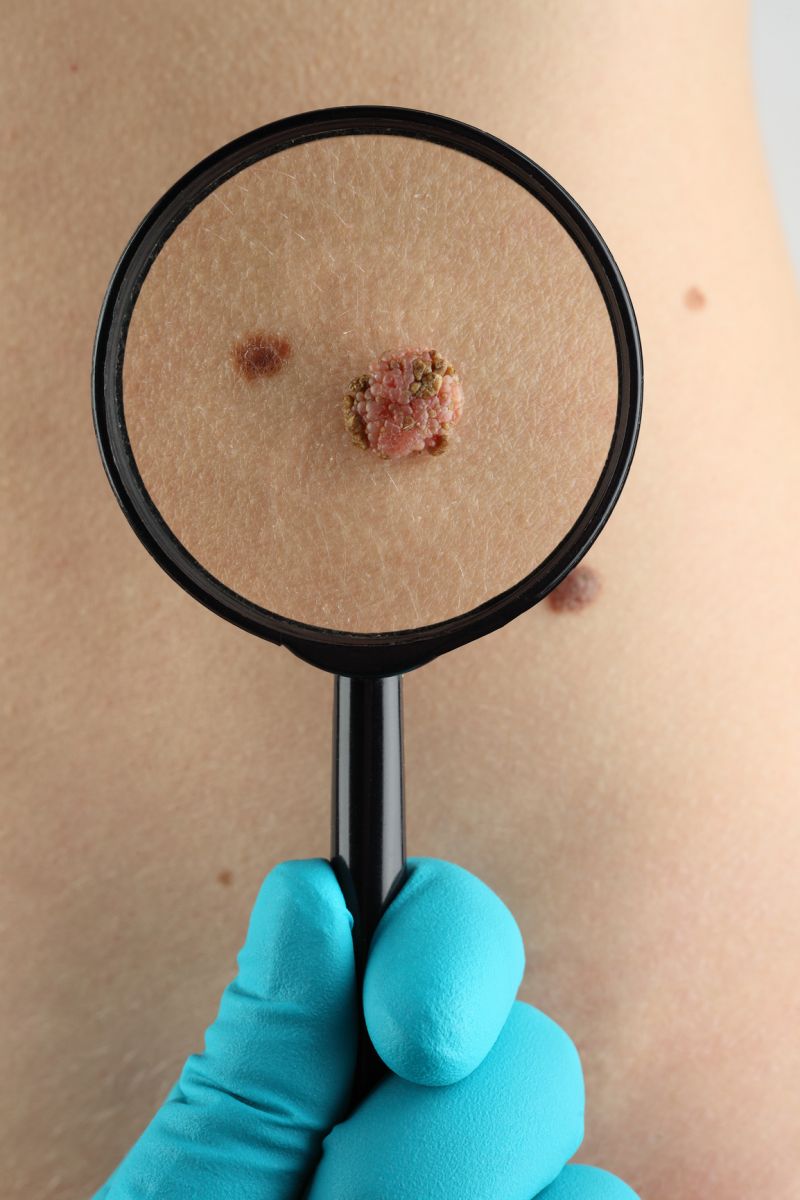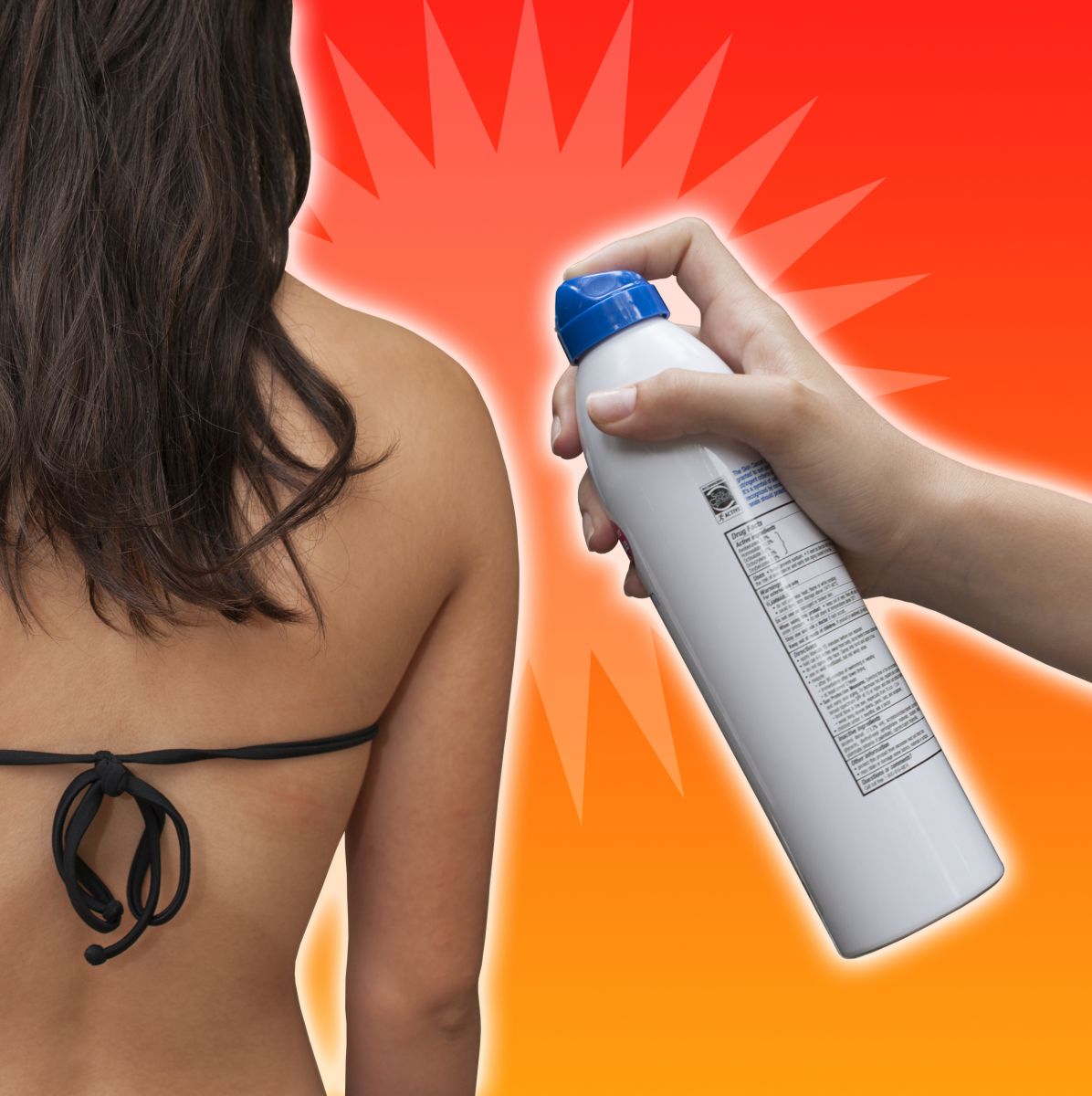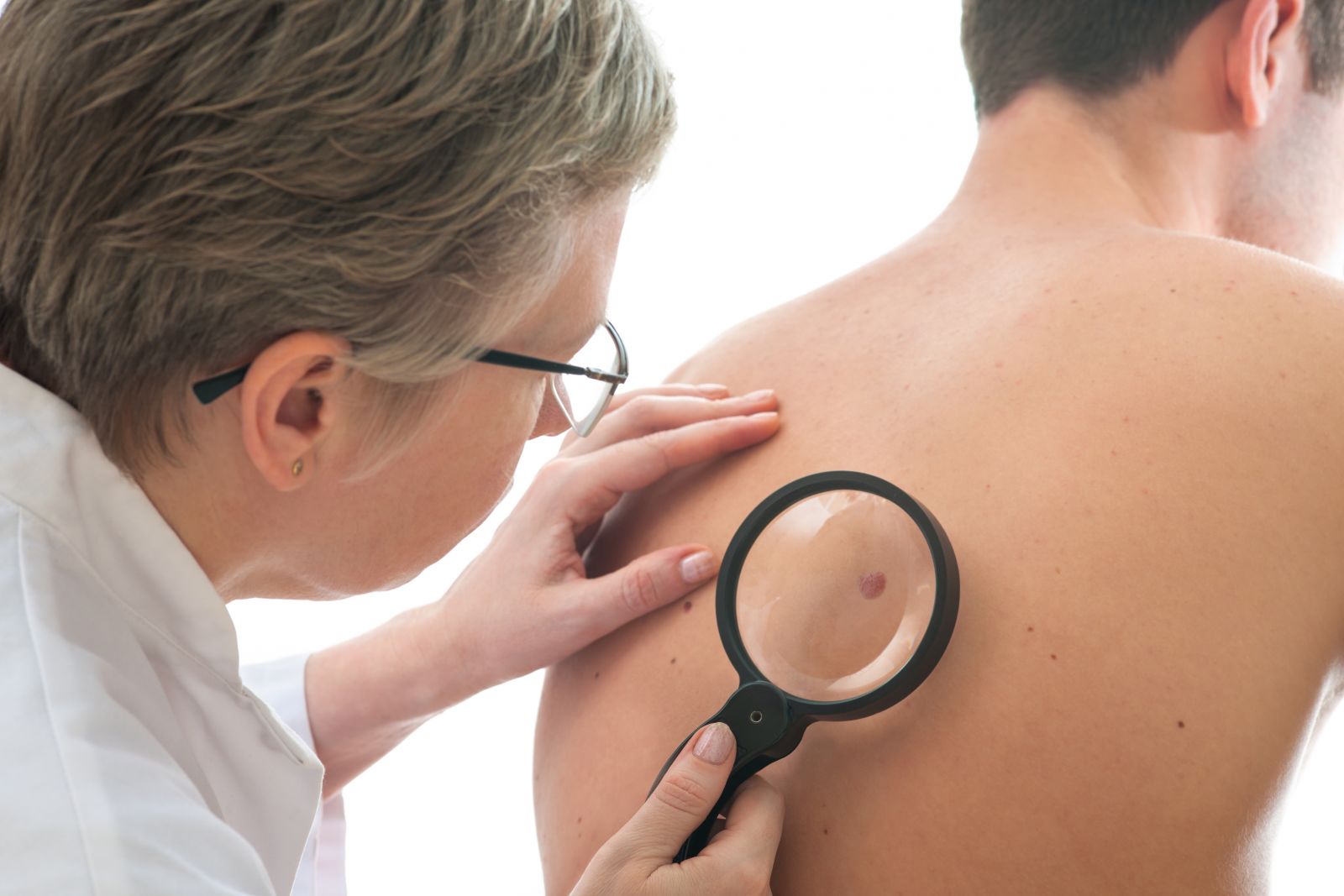Welcome to the DermacenterMD Blog
Posts for tag: skin

Check out these intersting and suprising facts about the skin that you may not have known!
- The skin is the bodies largest organ.
- The average person sheds approximately 1.5lbs of dead skin cells each year.
- An average adult has more than 20 square feet of skin.
- A square inch of the human body has about 19,000,000 skin cells and up to 300 sweat glands.
- The eyelids are the thinnest area of skin on the human body.
- Contrary to some beliefs, dust is not made up mostly of dead skin cells. There are many sources of dust pollutants floating around the air.
- Your skin sheds 50,000 cells every minute.
- There are at least five types of receptors in the skin that respond to pain and touch.
- Globally, dead skin accounts for about a billion tons of dust in the atmosphere.
- In blind people, the brain’s visual cortex is rewired to respond to stimuli received through touch and hearing, so they literally “see” the world by touch and sound.
Source: http://www.amazingandweird.com/facts/30-interesting-and-fun-facts-about-human-skin/
 The answer is simple- YES. Check out the article below from the Skin Cancer Foundation on the importance of taking the time to check your own skin every month. It could save your life!
The answer is simple- YES. Check out the article below from the Skin Cancer Foundation on the importance of taking the time to check your own skin every month. It could save your life!
The Skin Cancer Foundation recommends that everyone practice monthly head-to-toe self examination of their skin, so that they can find any new or changing lesions that might be cancerous or precancerous. Skin cancers found and removed early are almost always curable. Learn about the warnings signs of skin cancer and what to look for during a self examination. If you spot anything suspicious, see a doctor.
Performed regularly, self examination can alert you to changes in your skin and aid in the early detection of skin cancer. It should be done often enough to become a habit, but not so often as to feel like a bother. For most people, once a month is ideal, but ask your doctor if you should do more frequent checks.
Find step-by-step instructions on how to perform a self-examination by clicking HERE.
You may find it helpful to have a doctor do a full-body exam first, to assure you that any existing spots, freckles, or moles are normal or treat any that may not be. After the first few times, self examination should take no more than 10 minutes – a small investment in what could be a life-saving procedure.
If you or someone you know has found a suspicious lesion, give our office a call to have it examined. We are accepting new patients.
DERMACENTERMD 574-522-0265
 You may be surprised by the answer to this question-
You may be surprised by the answer to this question-
If you suffer from mild to severe rosacea there are certain lifestyle changes that can be implemented to help decrease flare ups and keep symptoms to a minimum. These aggravating factors may or may not affect your flare ups, but if you find that they do, it may be a good idea to avoid or reduce these activities in the future.
- Sun exposure-
It is important to protect your skin from the sun using daily sunscreen and wearing a hat to shield your skin. Even a small amount of sun exposure can cause rosacea to flare.
- Hot liquids-
Many people with rosacea report having flare ups when they ingest hot liquids such as coffee or teas. Try your coffee or tea iced for a period of time and see if your symptoms improve or subside.
- Spicy Foods-
Avoiding spicy foods may also improve symptoms of rosacea. Often times, the spike in body temperature induced by spicy foods is thought to cause flare ups.
- Emotional Upset-
Feelings of stress, anger or embarrassment are thought to make rosacea symptoms worse.
- Seasonal Changes-
Changes in the weather can also affect flare ups. According to a new National Rosacea Society (NRS) patient survey, nearly 90% of 852 survey respondents said their rosacea is affected by the change in seasons.
- Alcohol-
Having a glass of wine at the end of a stressful day sounds relaxing, but if you suffer from rosacea it may cause flushing to become worse. The reason for this is unknown, however, alcohol does not cause rosacea despite pervious popular belief.
- Temperature Extremes-
Extreme hot and cold can cause flare ups of rosacea to be more frequent. If you must be exposed to extreme temperatures, try to stay covered up or stay cool to keep your body temperature as regular as possible.
- Strenuous exercise-
Exercise has been reported to increase flare ups and cause flushing. Taking it easy can be beneficial to thwart symptoms.
- Hot baths or saunas-
Once again, avoiding extremes in temperatures such as hot showers or baths can help reduce flushing. Maintaining a regular body temperature can help reduce flare ups.
- Drugs that dilate blood vessels, including some blood pressure medications-
Rosacea affects the blood vessels of the face and any drug that dilates blood vessels can increase irritation and flushing.
Making simple lifestyle changes like avoiding certain aggravating factors, such as the ones listed above, can help to reduce your symptoms and flare ups. However, going in to see your doctor can be the best choice. Your dermatologist can evaluate your skin can determine the best course of action for treatment. Many prescription topicals can provide significant improvement.
Source: via http://www.webmd.com/skin-problems-and-treatments/news/20040218/link-between-rosacea-alcohol
 Sunscreen is a must. It is essential that you protect your skin from the harmful rays of the sun. Taking the proper precautions when it comes to the sun can decrease signs of aging and reduce your chances of getting skin cancer. Below you will find the answers to common questions that you should know make a point to know and understand. Knowing what sunscreen is and how it works can help you in your efforts to protect your skin and keep yourself and the ones you love healthy.
Sunscreen is a must. It is essential that you protect your skin from the harmful rays of the sun. Taking the proper precautions when it comes to the sun can decrease signs of aging and reduce your chances of getting skin cancer. Below you will find the answers to common questions that you should know make a point to know and understand. Knowing what sunscreen is and how it works can help you in your efforts to protect your skin and keep yourself and the ones you love healthy.
Below are several common sunscreen questions with answers taken from the Skin Cancer Foundation:
What Are Sunscreens?
Sunscreens are products combining several ingredients that help prevent the sun's ultraviolet (UV) radiation from reaching the skin. Two types of ultraviolet radiation, UVA and UVB, damage the skin and increase your risk of skin cancer. Sunscreens vary in their ability to protect against UVA and UVB.
What Are UVA and UVB?
Ultraviolet (UV) radiation is part of the electromagnetic (light) spectrum that reaches the earth from the sun. It has wavelengths shorter than visible light, making it invisible to the naked eye. Ultraviolet A (UVA) is the longer wave UV ray that causes lasting skin damage, skin aging, and can cause skin cancer. Ultraviolet B (UVB) is the shorter wave UV ray that causes sunburns, skin damage, and can cause skin cancer.
What Is SPF?
SPF – or Sun Protection Factor – is a measure of a sunscreen's ability to prevent UVB from damaging the skin. Here's how it works: If it takes 20 minutes for your unprotected skin to start turning red, using an SPF 15 sunscreen theoretically prevents reddening 15 times longer – about five hours. Most sunscreens with an SPF of 15 or higher do an excellent job of protecting against UVB.
What Does Broad-Spectrum Mean?
Broad-spectrum sunscreens protect the skin from both UVA and UVB rays. Beginning in December 2012, the U.S. Food and Drug Administration (FDA) began to implement new rules for "broad-spectrum" products.
So, next time you head outside to enjoy the outdoors, don't forget your sunscreen!!
Source:
http://www.skincancer.org/prevention/sun-protection/sunscreen
 The medical name for a mole is melanocytic nevus. It is a common benign growth of the color cells of the skin known as melanocytes. Moles normally appear during our first year of life and peak in number in the second or third decade. The average number of moles for an adult is 25. Moles can increase in number with sun exposure, especially sunburns before the age of 12. Some moles may even disappear as you get older.
The medical name for a mole is melanocytic nevus. It is a common benign growth of the color cells of the skin known as melanocytes. Moles normally appear during our first year of life and peak in number in the second or third decade. The average number of moles for an adult is 25. Moles can increase in number with sun exposure, especially sunburns before the age of 12. Some moles may even disappear as you get older.
The more moles you have, the greater your chance is of developing melanoma, the most serious and potentially fatal form of skin cancer. Chronically sun exposed body sites have a higher density of moles normally. Moles may increase in size, particularly before the age of 20. Having a high number of large moles also increases your chances of developing skin cancer.
Keeping track of your moles and checking your skin every month can help to ensure that you know where your moles are and you can be certain that they are not growing or changing. A new or changing mole is at the highest level of risk for skin cancer. If you find anything suspicious in a mole, it is best to have it looked at by your dermatologist.
If you have found something suspicious, call to make an appointment today: 574-522-0265.
Source:
Archive:
Tags
- dry skin (2)
- moisturizer (1)
- sensitive skin (3)
- PA (2)
- Skincare (2)
- skin cancer (29)
- cancer (6)
- facts (1)
- skin (19)
- dermatology (22)
- skin care (19)
- cosmetic (2)
- wrinkles (1)
- Botox (4)
- Dysport (3)
- sleep (1)
- look good (1)
- daily routine (1)
- healthy lifestyle (1)
- doctor (2)
- patient (1)
- sun protection (5)
- sunscreen (14)
- aging dermatology (1)
- providers (1)
- tanning (2)
- sun (6)
- UVA rays (2)
- UVB rays (2)
- melanoma (10)
- Acne (2)
- Treatment (2)
- sunscren (1)
- sun exposure (5)
- Melanoma Monday (2)
- Skin Cancer Awareness Month (1)
- education (2)
- skin cancer specialist (1)
- basal cell carcinoma (1)
- squamous cell carcinoma (1)
- ingredients (2)
- improve your smile (1)
- cosmetics (1)
- laser (1)
- fillers (2)
- sunburn (3)
- avoid the sun (1)
- hat (1)
- sun clothing (1)
- SPF (1)
- Rosacea (3)
- NP (1)
- Nurse Practitioner (1)
- mid-level provider (1)
- physician (1)
- dermatologist (6)
- cosmetic dermatology (4)
- anti-aging (2)
- youthful looks (1)
- Eczema (2)
- rash (2)
- itch (1)
- the rash that itches (1)
- reduce itch (1)
- itching (1)
- getting along with others (1)
- basal cell (2)
- squamous cell (2)
- detection (1)
- Mohs surgery (2)
- photoaging (1)
- Inspiring (1)
- word of the day (1)
- inspiration (3)
- uplifting (1)
- protection (4)
- lips (1)
- reduce wrinkles (1)
- look younger (1)
- encouragement (1)
- never give up (1)
- you can do it (1)
- medical school (1)
- dreams (1)
- brown spots (1)
- moles (2)
- liver spots (1)
- age spots (1)
- Abe Lincoln (1)
- life lessons (1)
- lip cancer (1)
- health (12)
- motivation (1)
- work (1)
- people (2)
- home life (1)
- lifestyle (1)
- ABCDEs of Melanoma (1)
- mole (1)
- skin check (2)
- skin facts (2)
- odd (1)
- fun (1)
- interesting (1)
- lung cancer (1)
- disease (1)
- Christmas (2)
- gifts (1)
- sun burn (1)
- winter skin tips (1)
- itchy skin (1)
- winter skin (1)
- myths (1)
- myth busted (1)
- skin protection (1)
- sunscreen safety (1)
- specialist (1)
- red skin (1)
- irritation (1)
- feel good (1)
- helping (1)
- help (1)
- helping others (1)
- treatment options (1)
- skin health (9)
- Vitamin D (2)
- tanning beds (1)
- skin health. dermatology (1)
- sunshine (1)
- awareness (1)
- prevention (1)
- sun damage (3)
- connections (1)
- working together (1)
- health care (1)
- biotin (1)
- medical (1)
- aging (1)
- elkhart (1)
- Roger Moore (1)
- check (1)
- skin type (1)
- skin cancer prevention (1)
- gift guide (1)
- Christmas gift guide (1)
- Dr. Roger Moore (1)
- holidays (1)
- family history (1)
